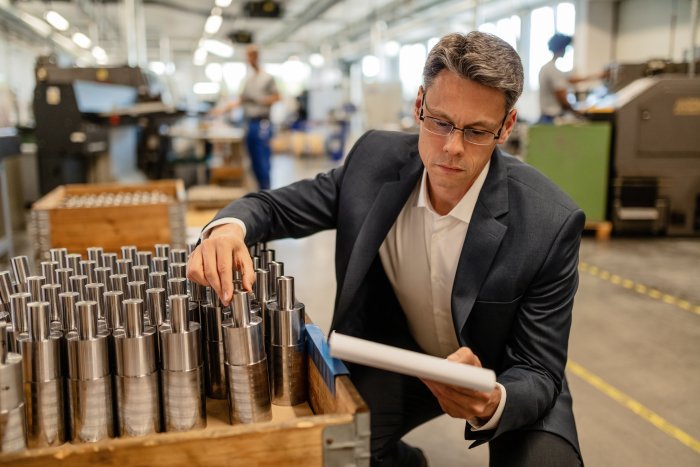
To drastically reduce the risks outlined above related to the management of these rare, critical, or strategic metals at the enterprise level, it is now appropriate to consider means of implementing a more circular economy. This would significantly mitigate the risks associated with the supply of critical or strategic rare metals.

Scarcity is a driver for raw material management by telecom operators.
Technological innovations developed to support the energy transition increasingly rely on so-called critical or strategic metals. In a geopolitical context where international relations are becoming more tense and with China's near-global monopoly on the extraction and refining of metals, the scarcity and exploitation of these raw materials have become true strategic challenges for companies and states.
To establish a strategy for securing supplies and anticipating potential crises, the European Union shares a matrix of critical and strategic raw materials every three years. This matrix is based on two axes: the probability of disruptions in substance supplies and the vulnerability of the system studied to these disruptions.
The criticality of a resource, especially metals and minerals, can be measured by geological factors (reserves of a particular resource), economic factors (added value, substitutability), geographical or geopolitical factors (production concentrated among few players or in unstable regions), as well as environmental and social factors (impacts of production on populations and ecosystems).
Among these critical metals*, we find lithium, transition metals (such as nickel, cobalt, titanium, or platinum group metals), and rare earth elements (neodymium, dysprosium, terbium, essential for high-tech manufacturing).
The concept of a resource corresponds to the ultimate quantity extracted and potentially extractable from the Earth's crust.
The notion of a reserve is dynamic, concerning the quantity of metal exploitable at a technologically viable cost. Technological progress has so far compensated for the increasing energy cost of exploiting less concentrated and accessible deposits. However, there is a technological threshold beyond which the cost of exploitation and production exceeds its profitability. This threshold has already been exceeded, for example, for copper.
The telecom sector, heavily impacted by these geological factors
These geological factors make certain resources particularly critical for states and companies, especially in the telecom sector:
- Increasing cost of extracting lower-quality deposits
- Political tensions and wars
- Refusal to exploit deposits in the seabed or fragile areas, inertia in opening new mines (on average, 15 years),
- Pollution and social impacts on workers and local populations, documented and known to the public today, creating a reputational risk for user companies, and many other reasons that make the exploitation of raw materials increasingly complex today.
Moreover, the extraction and refining of these metals require a considerable amount of energy, mostly carbon-intensive, contributing to the increase in greenhouse gas emissions. This is done in areas with increasingly vulnerable ecosystems, with growing impacts on climate, biodiversity, and water consumption.
Finally, in this context of increasing value of these metallic raw materials associated with their scarcity, the risk of theft or damage to telecom operators' infrastructure is growing, and so is its cost.
Digital activities, in addition to greenhouse gas emissions, have an ever more significant impact on the depletion of mineral resources (for example: extraction of raw materials, production of electronic devices, constant increase in resource demand, especially with the rise of IoT).
*One of the risks, by 2050, could be a partial or complete breakdown of certain supply chains for essential raw materials, highly dependent on China and Taiwan.
For telecom operators, there would be a certain impact:
- On the ability to maintain their network infrastructure and data centers,
- On the supply and repair of devices,
- As well as on the deployment of fixed and mobile networks.
To ensure a safe and sustainable supply for the ecological and digital future of the EU, the future European regulation "European Critical Raw Material Act" proposes the creation of strategic stocks and greater traceability of the supply chain.**
To drastically reduce the risks outlined above related to the management of these rare, critical, or strategic metals, at the enterprise level, it is necessary to consider implementing a more circular economy from now on. This would significantly reduce the risks associated with the supply of critical or strategic rare metals.
*Critical metal: A metal with remarkable properties that can lead to significant negative industrial or economic impacts related to difficult supply, subject to uncertainties.
*Strategic metal: A metal indispensable to the economic policy of a state, its defense, its energy policy, or a specific industrial actor (example: metals for energy transition).
Rare metal: This term can cover variable meanings depending on contexts:
-From a geological point of view, it refers to a metal with low average abundance and/or availability (capacity to concentrate in deposits) in the Earth's crust (example: cerium, the most abundant rare earth, constitutes 0.006% of the Earth's crust: rare or not?);
-In some journalistic uses, the term refers to a metal rarely used in a mass-market industrial sector or in very small quantities.
*Sources: With the acceleration of the ecological transition, the demand for essential raw materials is expected to explode by 500% by 2050, according to the World Bank. China holds almost a monopoly on the extraction of these materials, but it also has a dominant position in terms of refining and processing.
** https://ec.europa.eu/commission/presscorner/detail/en/ip_23_1661







